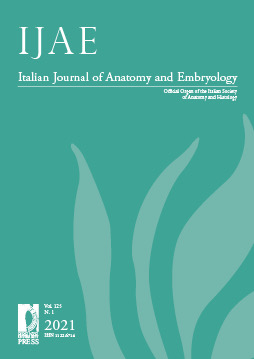Face-to-face vs distance learning in human anatomy education: a longitudinal study of students’ perspective and learning outcomes during COVID-19 pandemic
Published 2022-04-29
Keywords
- Anatomy education,
- COVID-19,
- computer-assisted learning,
- e-learning,
- web-based learning
How to Cite
Funding data
-
Sapienza Università di Roma
Grant numbers Progetto di Ateneo
Abstract
On March 9, 2020 attendance classes in Italian universities were suspended due to Covid-19 Pandemic. Thanks to the fast actions put in place by Sapienza University Governance and to the efforts made by all components of the university, the face-to-face courses were turned into on-line courses in only one week. This sudden change has been an even more exciting challenge for the Faculties of Medicine, whose members were also involved in the frontline battle against the virus. Anatomy academics, recognizing the challenges as opportunities to innovate anatomy teaching, set up at the same time: a specific survey to investigate students’ perspective on educational preferences and their mood; a longitudinal quantitative study to compare, for the first time in the same student’s population, exam grades after face-to-face classes and after online classes. The students, although with different motivations, considered valid both modes of attendance. Exam grades statistical analysis showed that anatomy exam marks after the online course had a higher average value (statistically significant) and with an excellent correlation factor, compared to the marks obtained at the end of the face-to-face course. Considering our data as a whole, we can suggest that face-to-face classes and online classes, rather than being interchangeable education modes, should be considered as modes with different characteristics that offer different educational benefits. These advantages may have different relevance for individual students, depending on their specific needs and individual preferences. This suggests the opportunity to propose customizable courses, centered on the student’s needs.


